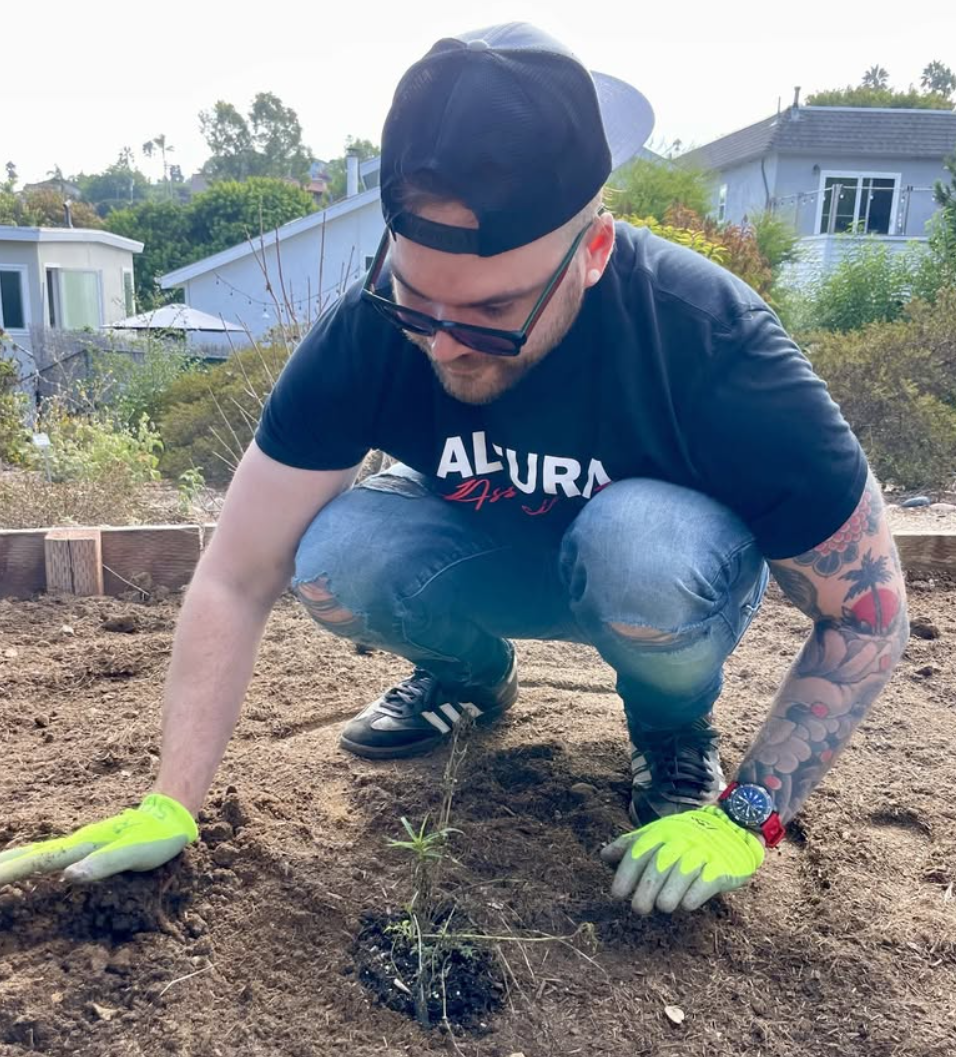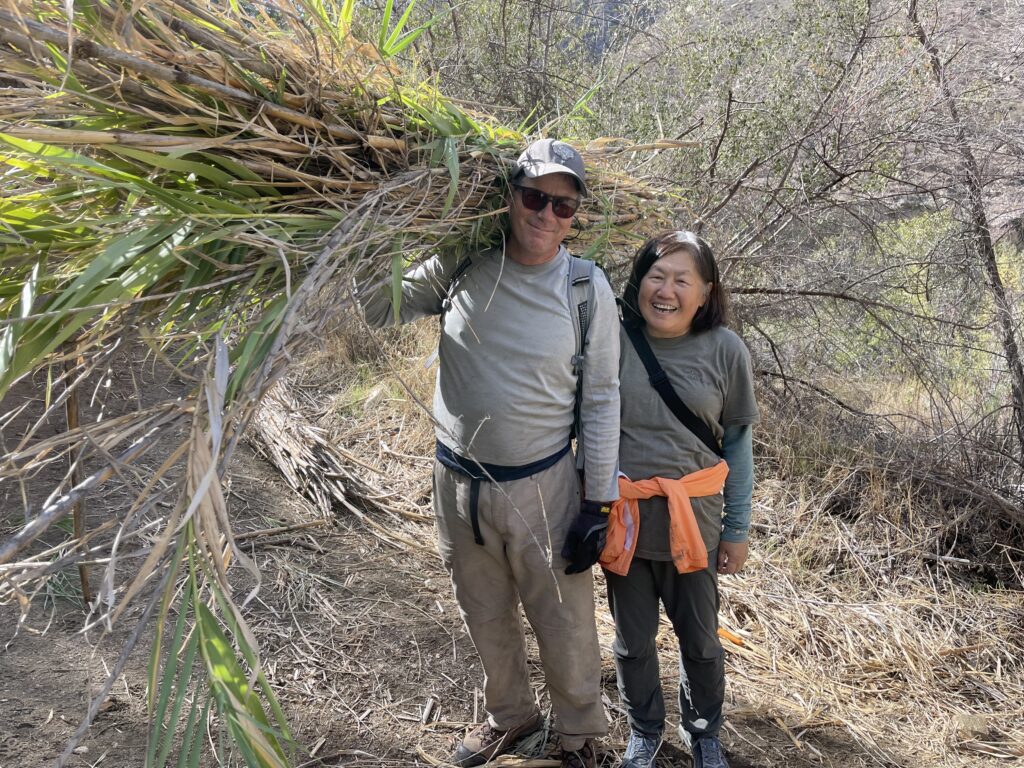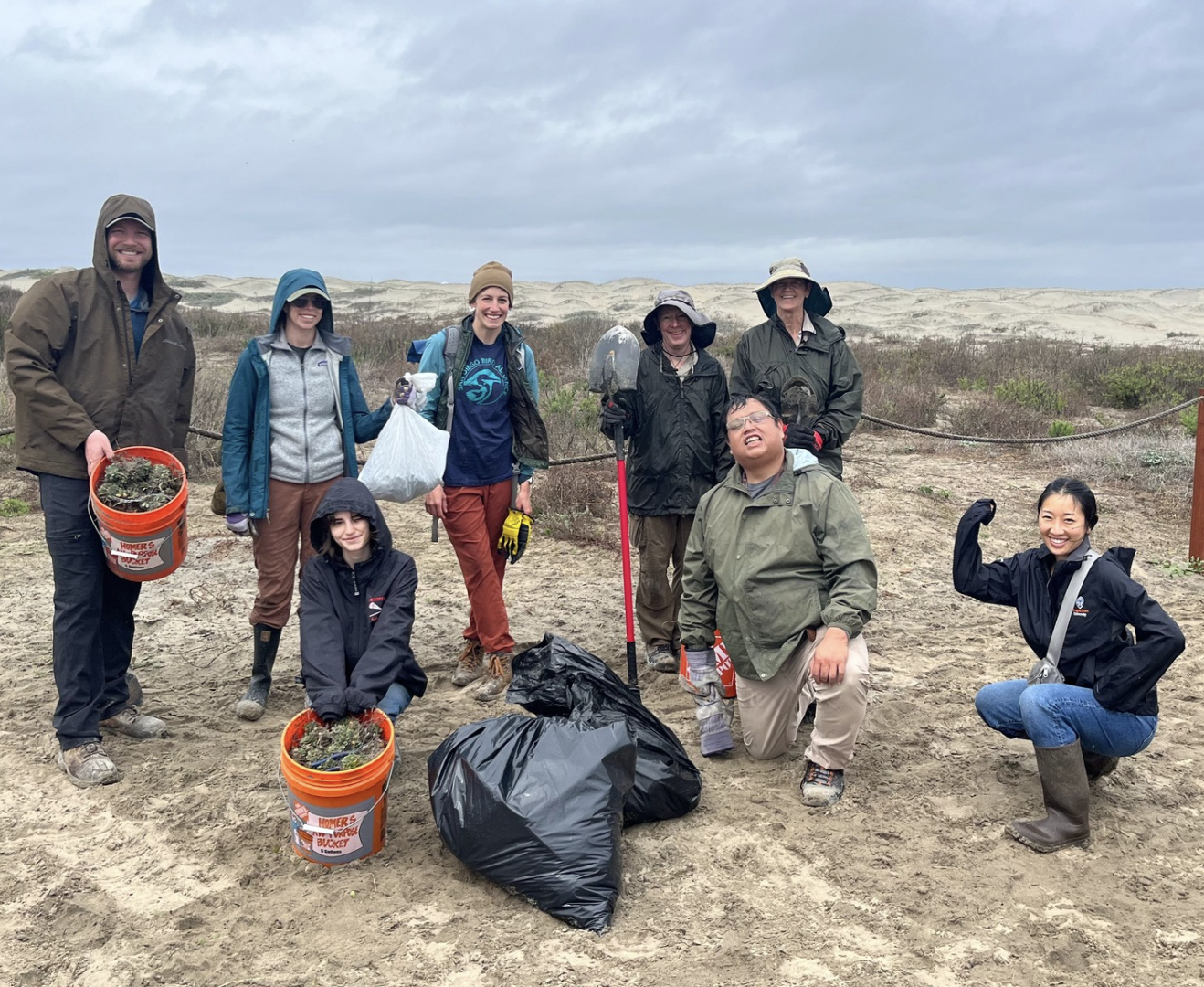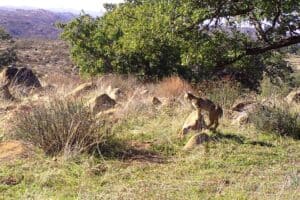River Restoration
Removing invasive plant species from the San Diego River Watershed
Invasive plants can have serious negative impacts on habitats, such as disturbing native flora and fauna, increasing soil erosion, creating fire and flood hazards, and degrading water quality. The San Diego River Park Foundation completes invasive plant removal and control on our own lands, including our backcountry preserves and as part of our Grant Park project. In addition, we have worked with willing landowner partners, such as the City of San Diego and City of Santee, as well as private landowners to remove invasive plants as part of a watershed-wide effort to reduce the harmful impacts of invasive plants.

Why do we care about non-native plants?
A non-native plant is a plant species that does not originate from our region. A common characteristic to a successful non-native plant is that it grows aggressively, spreads, and displaces other native plants. This is why we call them invasive. Most commonly, invasive, non-native plant species are most successful in regions that possess a similar climate to their home location.
Invasive species can negatively affect multiple levels of an ecosystem's natural processes:
- Invasive species drastically reduce the resilience of an ecosystem. Environmental resilience is an ecosystem's ability to maintain its normal patterns of nutrient cycling and biomass production after being subjected to damage caused by an ecological or human disturbance, like a fire, flood, or pollution event.
- Invasive plants can increase risk of soil erosion, fire and flood hazards, and degrade water quality and quantity.
- Invasive plants are comparatively poor habitat for native wildlife, and often reduce biodiversity.
How did invasive plants get here?
Unfortunately, invasive plants are common in the San Diego River Watershed, especially in the lower, more developed reaches of the San Diego River. Many invasive plants are introduced by people, either by accident, such as in livestock feed or hooves, or on purpose as an ornamental plant for landscaping. These can then escape into native habitats when their seeds are carried by wind, water, or animals.
The San Diego River Park Foundation recently completed a survey to map targeted invasive plants along the Lower San Diego River. This report has guided our planning with landowners to take a watershed approach to managing these invasive species. Download the Lower San Diego River Exotic Weed Mapping and Report.


Invasive plant control
Unfortunately, there are many different non-native plants in the San Diego River watershed, but some of the plants we prioritize for removal and control include:
- Giant reed (Arundo donax)
- Brazilian peppertree (Schinus terebinthifolia)
- Eucalyptus (Eucalyptus camaldulensis)
- Canary Island date palm (Phoenix canariensis)
- Mexican fan palm (Washingtonia robusta)
- Acacia (Acacia spp.)
- Saltcedar (Tamarix spp.)
- Castor bean (Ricinus communis)
- Pampas grass (Cortaderia selloana)
- Fennel (Foeniculum vulgare)
Download this PDF document for more information about the invasive plants we target.

